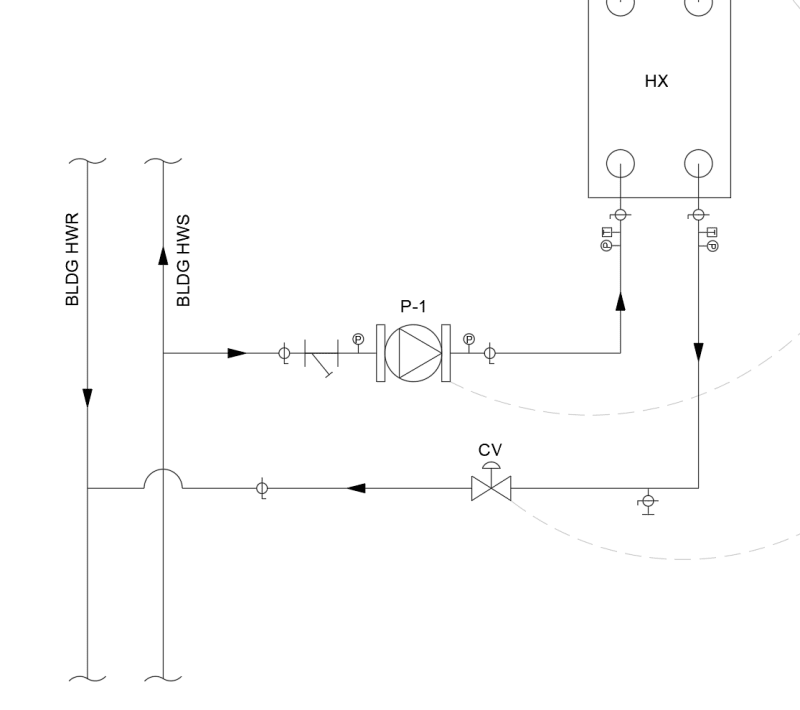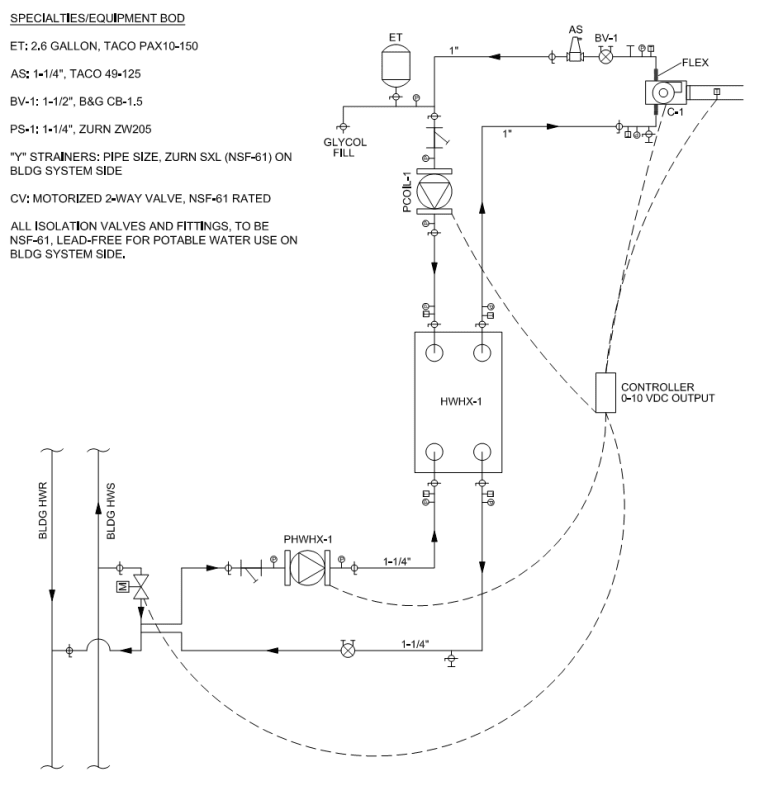nuuvox000
Mechanical
- Sep 17, 2019
- 344

This is how I'd like to pipe in a new heat exchanger into the existing building system. The pump shown is variable speed. I'm concerned that the higher pressure HWS upstream water will push more water through the pump than required when the pump is running at low speed. Do you think this will be an issue? Curious if the pump will "resist" the additional turning of the impeller if the upstream pressure is trying to push water through, when it's running. Thanks in advance!


